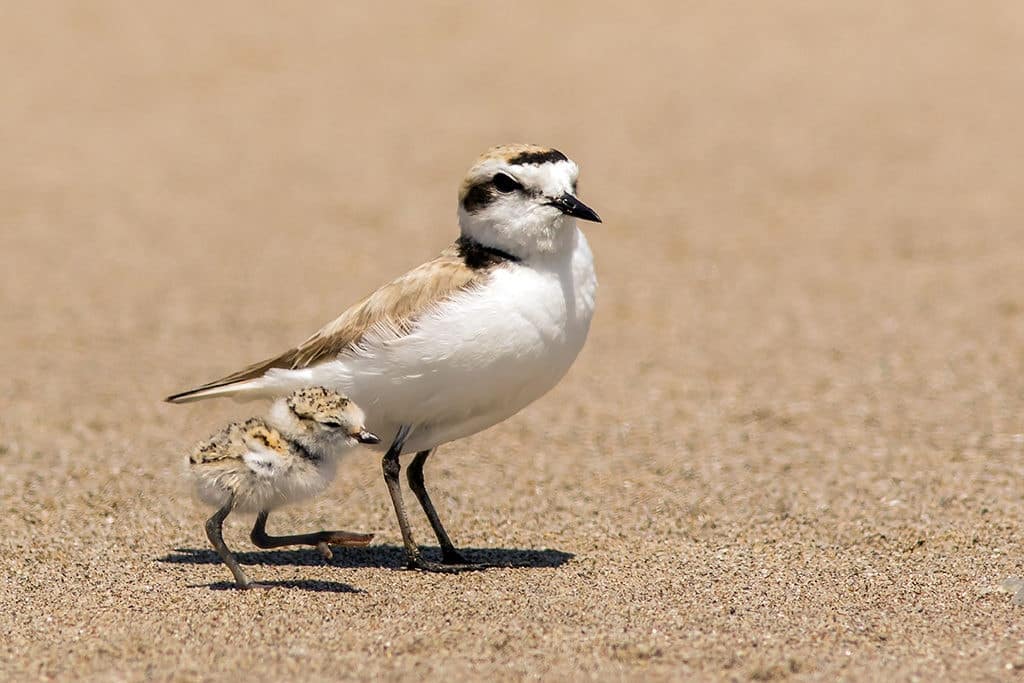Snowy Plover Patrol
North Coast | April – September
The Pacific coast population of Western Snowy Plovers has been in decline for several decades due to habitat loss, predation, and disturbances from development, recreation, and other human pressures. In Oregon, the population hit a low of about 50 individuals in the early 1990s. Subsequently this species was listed as threatened under the Federal Endangered Species Act in 1993. Due to targeted recovery efforts in Oregon, mostly focused on the south and central coast, the bird has bounced back to about 500 individuals although still a small, vulnerable population. Snowy Plovers are beginning to make a comeback at traditional north coast nesting sites.
This project aims to engage local communities to help track where plovers are and how they are doing on the north coast as other management occurs, offering an opportunity to engage the public to help protect this small bird.
UPCOMING TRAININGS:
Virtual Snowy Plover Patrol Training – April 3 & 4, 2024
In-Person Snowy Plover Patrol Training – April 20, 2024
Partners: Oregon Parks and Recreation Department, Bird Alliance of Oregon Society of Lincoln City, Friends of Netarts Bay, Friends of Cape Falcon, U.S. Fish and Wildlife Service, Oregon Shores Conservation Coalition, Oregon Biodiversity Information Center

About the Survey
- Survey Instructions: Please read survey protocol and attend spring trainings for detailed instructions on how to conduct the surveys.
- When: This project runs annually from April through September and involves up to two surveys per month for plover detection surveys and/or weekly nest monitoring (if nests are found). Field training and surveys are weather dependent.
- Where: Surveys are conducted at 6 sites along Oregon’s north coast: Clatsop Spit (Fort Stevens State Park), Necanicum Inlet (Gearhart and Seaside), Nehalem Spit (Nehalem Bay State Park), Bayocean Spit (Bayocean Peninsula County Park), Netarts Spit (Cape Lookout State Park), and South Sand Lake Spit (Sitka Sedge State Natural Area). Surveys may be conducted alone or with 1 or 2 others.
- Time Commitment: In the interest of training time, we ask volunteers to commit to at least a few surveys per season. We can work with you on scheduling and flexibility. Surveys take between 2-5 hours depending on the site.
- Reporting: Data is submitted via NestStory (an online data collection app) after the survey. You will be emailed a link to create an account.
Volunteer Requirements
- Trainings: Spring trainings are held both virtually and in the field. Because this is a threatened species, you MUST attend a field training to get on the permit issued under the Endangered Species Act to conduct nest monitoring surveys. Volunteers are not required to be on the permit to conduct detection surveys.
- Birding skills: Volunteers must be able to visually identify Snowy Plovers – this is covered in the training.
- Equipment: Volunteers must have their own binoculars. We also highly recommend using a spotting scope or camera if possible. If you do not have binoculars or a spotting scope, we do have some available to borrow.
- Field conditions: Surveys can be physically demanding – walking several miles on sandy beaches and potentially uneven terrain. Please let us know in the Sign Up form if you have any physical limitations. Contact cgates@birdallianceoregon.org or check out our Volunteer page for more accessible opportunities!
- Transportation to and from the site is your responsibility.
Contact
For questions contact Joe Liebezeit at jliebezeit@birdallianceoregon.org or Cara Gates at cgates@birdallianceoregon.org.

